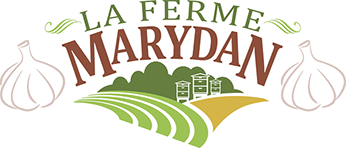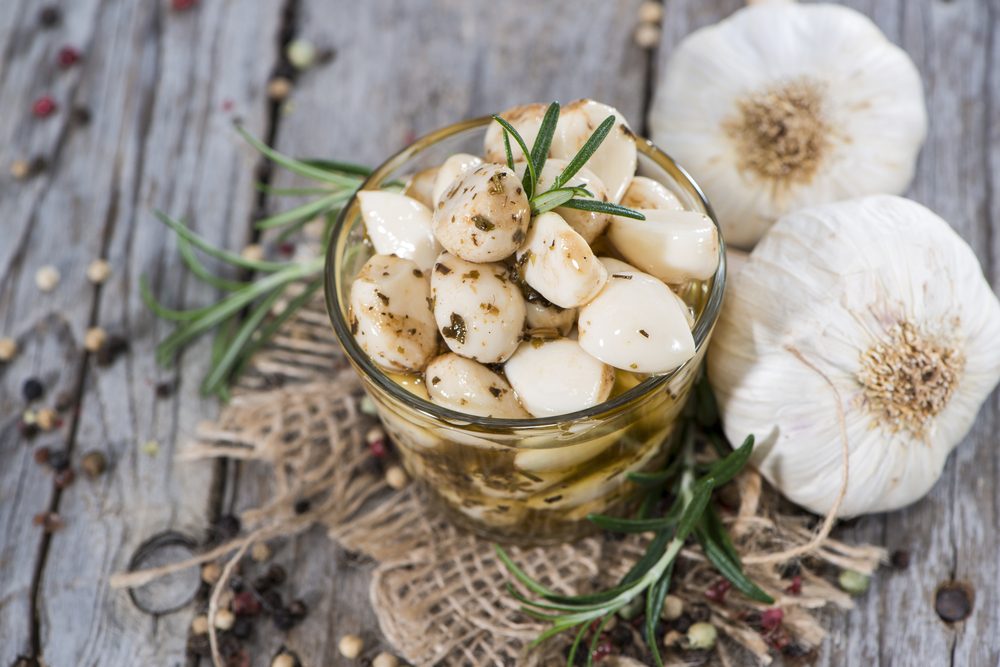Garlic, a protective ingredient against certain chronic diseases
Several prospective and epidemiological studies have shown that a high consumption of vegetables and fruit reduces the risk of cardiovascular disease, certain cancers and other chronic diseases. More specifically, studies have shown that the consumption of vegetables from the alliaceae family (garlic, onion, shallot, chives, spring onion, leek) would have a protective effect against stomach and intestinal cancers.
Garlic and cancer
Garlic could slow down the development of certain cancers, both by its protective action against damage caused by carcinogens and by its ability to prevent cancerous cells from growing. Sulfur compounds in garlic could play an important role. Thus, garlic, at a rate of two cloves per day (i.e. approximately 6 g of garlic), is part of a list of foods containing molecules with anticarcinogenic potential to be favored in an optimal diet aimed at preventing cancer.
The results of a meta-analysis of 18 epidemiological studies published between 1966 and 1999 show a 30% decrease in the risk of colorectal cancer and about 50% decrease in the risk of stomach cancer with high garlic consumption. Across all studies, such consumption was approximately equivalent to 18 g of raw and cooked garlic per week (or about six cloves). Since the amounts ingested varied greatly from one study to another, it is difficult to determine more precisely the minimum amount of garlic to consume in order to benefit from its effects on colorectal and stomach cancers. In addition, it is important to remember that no single food can be effective in protecting against cancer. A varied and constant consumption of several foods with preventive potential as well as maintaining a healthy lifestyle are essential.
Other studies have observed an inverse relationship between garlic consumption and the incidence of laryngeal, prostate and breast cancers. However, no general conclusion can be drawn at this time, given the small number of studies on the subject. To date, there is insufficient data to link this to other cancers such as esophageal and lung cancers.
A real ally for cardiovascular health
The American Heart Association (AHA) publishes dietary recommendations to help prevent the risk of cardiovascular disease, such as eating a high intake of fruits and vegetables, and choosing whole-grain grain products and low-fat dairy products. Based on numerous research findings, the AHA proposes a list of specific foods with some cardioprotective effect. Garlic is one of these foods (along with nuts, soy, legumes and tea) and its consumption is therefore added to the AHA’s basic recommendations for cardiovascular disease prevention.
The majority of studies evaluating the effect of garlic on cardiovascular disease risk factors (such as blood pressure, cholesterol and blood glucose) have been conducted with garlic supplements or extracts in order to isolate the active ingredients. Overall, this research shows a tendency to slightly lower blood cholesterol and triglyceride levels. Few studies have evaluated the real impact of fresh garlic consumption (raw or cooked) on these risk factors and they date back a few years. In two of these studies, daily consumption of 3 g and 10 g of fresh garlic for 16 and 8 weeks, respectively, contributed to a decrease in total cholesterol. Further studies are needed to assess the effect of the
consumption of fresh garlic on the prevention and treatment of cardiovascular diseases. According to the results of studies using garlic extracts, a daily consumption equivalent to 2 g to 5 g of raw garlic or 10 g to 15 g of cooked garlic would be necessary in order to benefit from certain risk factors of cardiovascular diseases such as total cholesterol, LDL-cholesterol (“bad” cholesterol) or high triglycerides in the blood.
Anti-microbial and anti-infectious properties?
Garlic is traditionally used for its antimicrobial properties and for the treatment of certain infections. The majority of studies on the subject have been carried out using garlic extracts, at doses that are often difficult to achieve with the usual consumption of fresh garlic. In a population-based study in one region of China, high garlic consumption (more than 5 kg per year per person, equivalent to about four to five garlic cloves per day) was weakly associated with a decrease in Helicobacter pylori infections. This observation was challenged by a clinical study in which people consumed ten cloves of fresh garlic per day, with no significant effect against H. pylori infection. Some studies suggest that garlic may help prevent the common cold. In fact, in one study, two groups were compared: one consumed a garlic supplement and the other a placebo for 12 weeks during the cold season (November to February). The results show that those in the garlic supplement group had fewer cold episodes than those who took a placebo. In addition, when they had a cold, individuals who were in the garlic supplement group experienced a faster reduction in symptoms than those who took a placebo. For the moment, there is still insufficient data to affirm that the consumption of fresh garlic would have an anti-infectious effect on the body.
An interesting content of antioxidants
Antioxidants are compounds that protect the body’s cells from free radical damage. The latter are highly reactive molecules that would be involved in the development of cardiovascular diseases, certain cancers and other diseases related to aging. Garlic contains various antioxidant compounds such as flavonoids and tocopherols, in addition to sulphur compounds that would also contribute to its antioxidant activity. Consumption of fresh garlic (raw or cooked) increased plasma antioxidant activity in rats, but daily consumption of 3 g to 6 g of raw garlic for seven to eight days in humans did not confirm this observation. However, it is known that garlic has a higher antioxidant capacity than a wide selection of vegetables at equivalent weight. On the other hand, when the frequency and size of the portion usually consumed are taken into account
However, the impact of garlic consumption on total antioxidant capacity remains limited compared to other vegetables consumed in larger quantities.
A word from the nutritionist
The enzyme found in garlic that allows the formation of allicin and other sulfur compounds is deactivated by heat. Depending on how and for how long the garlic is cooked, different sulfur compounds will be formed and the amount of antioxidants may decrease. The properties of raw garlic are thus superior to those of cooked garlic. A tip: add the garlic 20 minutes or less before the end of cooking to preserve the quality of its active compounds as much as possible.
Garlic has been used for hundreds of years to treat various health problems. A large number of studies have been carried out to learn more about the active ingredients of garlic and their physiological effects. In some studies, garlic is used in different forms: fresh, dehydrated, as well as in the form of extract, oil or tincture. It should be noted that fresh garlic (raw or cooked) as used in various food preparations provide health benefits.
Garlic has antimicrobial, antiseptic, antibacterial, antibiotic, antifungal and antiviral properties. This makes it a food that is capable of driving out and eliminating a large number of pathogenic bacteria when they manage to get into our bodies.
The WHO recognizes its benefits in cases of respiratory infections (e.g.: bronchitis), arthritis, excess blood cholesterol, digestive disorders and intestinal worms.
Garlic is rich in taste and low in calories. It will enhance the flavors of all your dishes!
At Marydan Farm, we are proud to offer you organic garlic from our sustainable agriculture!

